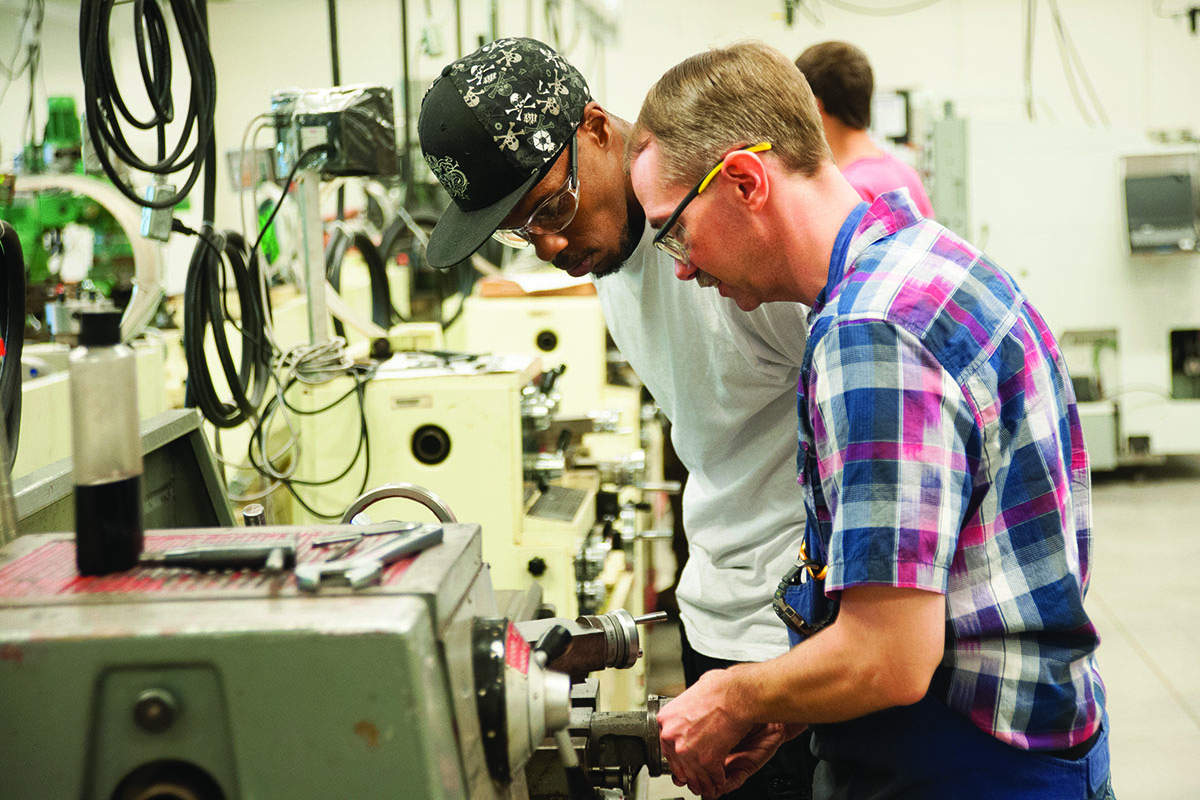
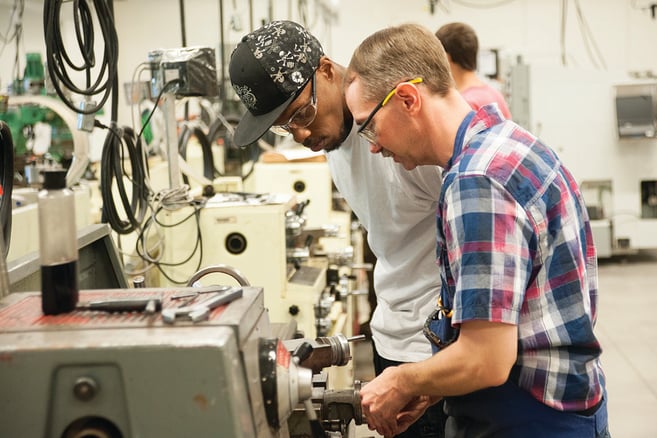
Community college isn’t what it used to be.
Need proof? Just take a closer look at these curriculum courses: computer integrated machining; healthcare business informatics; supply chain management. You can still find plenty of broader, general education classes, but community colleges are more focused than ever on connecting people with careers.
That’s good news for thousands of Currituck County high school students who are trying to figure out their future. It’s even better news for the local economy.
Founded in 1961, College of the Albemarle (COA) is North Carolina’s first community college. What began with 113 students and a remodeled hospital in Elizabeth City, has become one of the region’s most important economic development partners.
Today, the COA operates four campuses across seven counties (Dare County, Roanoke Island, Edenton-Chowan and Elizabeth City). It boasts annual enrollments of more than 3,200 COA students and 4,500 Workforce Development and Career Readiness students.
.jpg?width=600&name=RATTC%20(1).jpg) College of the Albemarle also operates the Regional Aviation and Technical Training Center (RATTC) in Barco. The RATTC is a state-of-the-art, 40,000-square-foot facility, which includes four aviation labs and classrooms. This July, it was announced that COA and Currituck County will work together to establish a public safety facility (training center and classrooms) located near the RATTC. A date for the start of construction has not yet been set.
College of the Albemarle also operates the Regional Aviation and Technical Training Center (RATTC) in Barco. The RATTC is a state-of-the-art, 40,000-square-foot facility, which includes four aviation labs and classrooms. This July, it was announced that COA and Currituck County will work together to establish a public safety facility (training center and classrooms) located near the RATTC. A date for the start of construction has not yet been set.
As it expands its footprint, COA continues to play a pivotal role in the growing economy of northeastern North Carolina. Over the last 56 years, technology reshaped the world and demands on the American workforce shifted dramatically. Thankfully, COA has kept pace.
Part of the secret behind COA’s success has been its partnerships with local government, industry and economic development offices. To get some insight, we spoke with two of the COA’s senior leadership team, President Dr. Robert Wynegar and Vice President of Learning, Dr. Evonne Carter.
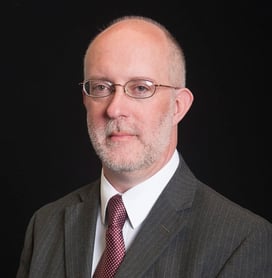 Dr. Wynegar joined COA as its president in April of this year. He previously served as the Vice President of Academic and Student affairs at Western Nevada College, Dean of Associate of Arts at Hillsborough Community College in Tampa, Florida, and as Dean of Math and Sciences at Darton College in Albany, Georgia.
Dr. Wynegar joined COA as its president in April of this year. He previously served as the Vice President of Academic and Student affairs at Western Nevada College, Dean of Associate of Arts at Hillsborough Community College in Tampa, Florida, and as Dean of Math and Sciences at Darton College in Albany, Georgia.
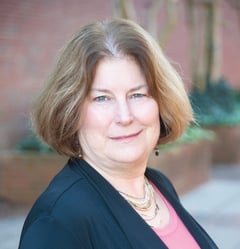 Dr. Carter joined COA in 2013. She has worked in higher education for more than three decades. Currently, as the Vice President of Learning at COA, she oversees all the college’s academic programs, student academic support services and educational offerings in Curriculum and Continuing Education.
Dr. Carter joined COA in 2013. She has worked in higher education for more than three decades. Currently, as the Vice President of Learning at COA, she oversees all the college’s academic programs, student academic support services and educational offerings in Curriculum and Continuing Education.
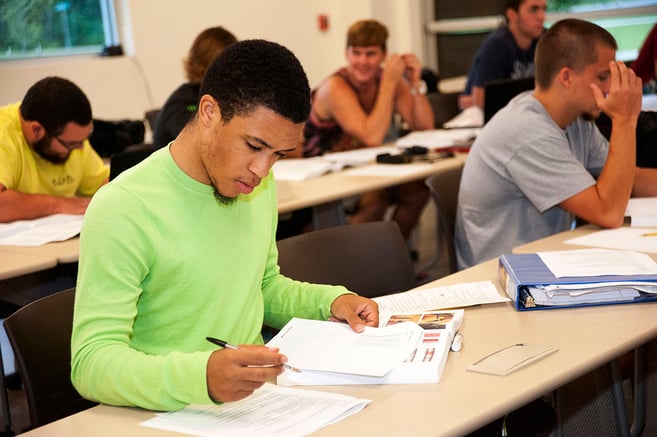
Wynegar: Community colleges have been around for fifty years or more. They popped up after World War II and most of them started because G.I.s came back looking for ways to be trained for better jobs. Somewhere along the way, community colleges switched from job training to more of a ‘transfer to four-year school’ emphasis.
In the last five to six years, I’ve seen that emphasis swinging back to more training and technical education.
Wynegar: I think we're certainly doing a lot of that already. Not as much as some schools might, because some other schools have more industry to work with than we do in this region.
Carter: Typically community colleges offer programs for which there is a market for graduates. Anytime we want to offer a program, we have to do a market analysis to make sure that our graduates will have jobs in the area.
Carter: Yes, exactly.
Wynegar: Our challenge is to make sure the offerings we have match the community that we're in.
Wynegar: We can try to push the market, but we’re not usually successful when we do that. It’s better to just pay more attention to what's out there, or what might be coming.
In 1965 the biggest program in community colleges in the country was punch card operator. By 1975, there were ZERO punch card operators employed in the country. Predicting what MIGHT be good for us down the road can be very dangerous.
Carter: We can have an idea and think it's going to work and get buy-in from some local people, and then the market changes. That’s not good. We can’t offer programs if we don't have the student body.
Let me give you an example: We started an architecture program about six years ago, maybe a little bit more, and people were not taking the two-year program. We now have a class that we have to finish out with one student in Currituck because that student has the privilege of being able to finish. According to the state legislature, we have to maintain the program until all of the students have been allowed to finish.
We do it because we are obligated—and of course we want that person to finish—but we don't have a full-time teacher anymore. So we can't recoup what it costs. That matters because we're a public entity and we’re obligated to the taxpayer. We don't want to be in the red.
Carter: We’ve tried to be ready with the logistics program. About three years ago, we met with some people from the Port of Virginia, and they told us about the expansion and the gigantic growth that was going to happen.
We started a logistics program so that students can be ready to help all the trucks that will start going down the new freeway. We're looking forward to being on that line with the expansion of I-87. Another industry we would love to see is diesel companies so we can start a diesel mechanics program.
I think that sometimes we have to take calculated risks, and with supply-chain management, it's one of those jobs that's portable, and adaptable. We didn't have a lot of investment in equipment and machinery.
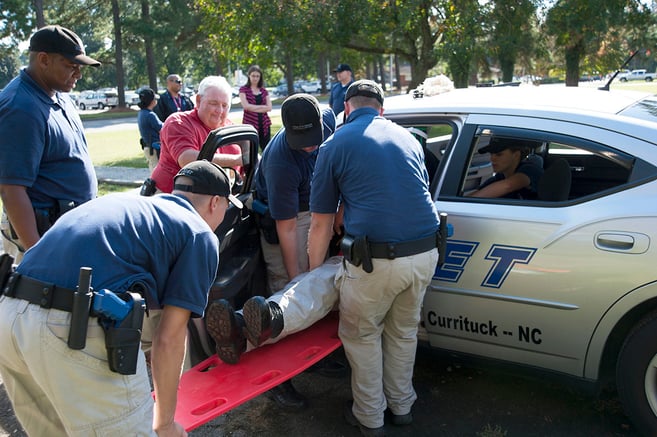
Wynegar: Most of those are programs we already have here, yes.
Carter: The only difference is we wanted to offer our paramedic EMS program in a credit format (we call it a curriculum format). We've had it as a continuing education course and as ongoing training. But in order to reach a bigger market—including some of the younger students and some high school students who could take some of those courses—we needed to actually apply to have that program be a curriculum program. That’s one of the new programs that will be in the new building.
Carter: It varies. The health programs and public safety programs we offer are popular throughout the state, because those jobs are always available. The same goes for our health programs, since there are hospitals in just about every locality.
Wynegar: Absolutely. In fact, I would say that ALL of our future success is dependent on working with third parties.
Carter: I have spent time with different businesses and industries to help them see what kind of employees they need and what kind of training they need - and we try to connect the students to those particular areas. We also do small business development to help people start businesses.
Another big thing to remember is that here in North Carolina, students in high school can take college credits for free. If more employees (and employers) knew that, it might attract other companies from Virginia and some of the high industry places to move to North Carolina.
Wynegar: That's why partnering with economic development offices is so beneficial. It helps us see what's coming far enough in advance so we can get up to speed and ready for it.
Wynegar: We love our students, but they don't always come to us knowing exactly what it is they want to do when they graduate.
The ones that do come that way are really easy to work with. The ones who don't come that way need a little extra guidance… so we need to know what's available and where we can get the assistance to help them and what they're going to need when they graduate.
Wynegar: The odds of them wandering in the front door by mistake after they graduate are pretty slim.
Carter: We have a really robust recruiting and outreach program with our high schools. We have a recruiter who specifically goes to each one of our seventeen high schools in our region. We cover seven counties, including Currituck.
We also have our faculty who go to the high schools to talk to students and get them interested in COA. We do exploration days, we do boot camps and career camps. We really do make a concerted effort to get to the students and their parents early, so that they consider us.
Wynegar: That's more of an uphill battle. I think we've had some shift, but not nearly as much as I wish it would change. We took advantage of some situations politically over the last eight years with the former Vice President's wife (Dr. Jill Biden) being in a community college environment. It certainly helped the status a little bit. But there's still some thinking out there that community college is somehow second class to universities.
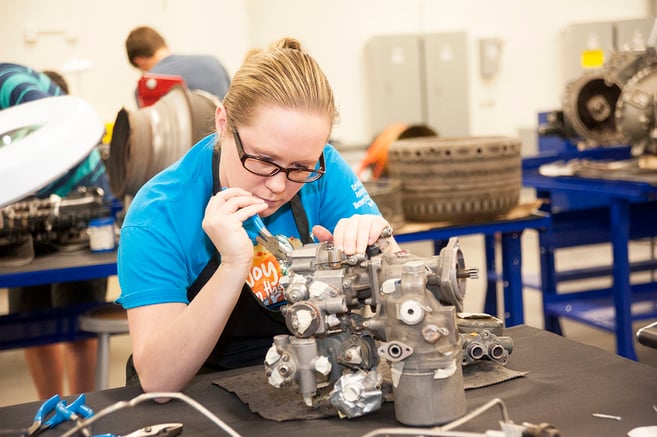
Carter: You can even see some of those changes in the legislature, where they're looking at apprenticeship options and having people connect with business and industry sooner.
That's a little bit of an evolution for us since we don't have as many big industries. But in some of the larger community colleges, that idea of hands-on, on-site learning through apprenticeships is really growing and students are taking advantage of it.
We would like to do more, but it starts with our industry partners needing apprentices. If they don’t have more than fifty people working there, most companies just aren’t motivated to start building their pipeline of employees with high school and college students.
Carter: We can do short-term training. We can do non-credit courses, very quickly, very easily. If we had an audience for those courses, we could connect every single one of our credit programs with some non-credit options for people who might be thinking of changing careers or getting ready for a career.
We can be ready, but depending on what exactly you need, it might take one or two years for us to be completely ready. For almost any program that we're looking at, even with the EMS, it takes about two years to get it all set and to get the facilities finished.
Wynegar: Yes, that’s a national trend unfortunately... the cleaning out of rural areas, with everybody migrating to urban centers.
Carter: But I think that most of our programs are focused for the students to stay here. We have business programs and computer programs and our graduates typically get jobs, or they become entrepreneurs and open up their own businesses. A lot of our students—many of our students—want to stay here.
Wynegar: I would love to be able to replicate it. I was fortunate in that there was some small to mid-size industry in northern Nevada when I was there. Then about two years ago, Tesla announced they were moving into the area. That meant 6,000 new jobs and a 600,000-square-foot battery factory… making more batteries than the rest of the world combined.
When you get a game-changer like that, literally moving into your backyard, it changes everything. But nobody has indicated to me that there's a Tesla about to pop into our backyard. If there was, you would see a great big smile on my face.
What we have to do instead, is focus on the smaller groups. The 25-50 and even 10-employee companies that are doing machine-tuning, welding, electrical... the things that we can train for easily and we already have in place. We have to focus on that until we know something bigger is coming.
Wynegar: We would be more than happy to take that challenge on. Unfortunately as I said, nobody has indicated that that's coming our way.
Wynegar: My first observation, even before I came here, was that—based on the population of our seven county area—we were about 300 students short of where we probably ought to be.
I want to figure out what happened to those 300 students. Are they not coming to college? Are they going out of the region to go to college? What's going on there?
If they're not going to college at all, then we've got some work to do at the high school level, to explain to them why they need to be in college. The jobs that were there in the 1950's for high school graduates don't exist anymore. If they do still exist, they require some level of post secondary education.
Wynegar: To be honest with you, Northeastern North Carolina looks a lot like home to me in many ways. I spent the majority of my youth in a little town in Southwest Virginia. Geographically it's different here, but culturally it’s very similar. That attracted me.
I remember how desperate I was to escape when I was in high school, and I wanted to see if I could come back to a place like that and convince people that, "Maybe you don't need to escape. Maybe you can do everything you want to do right here."
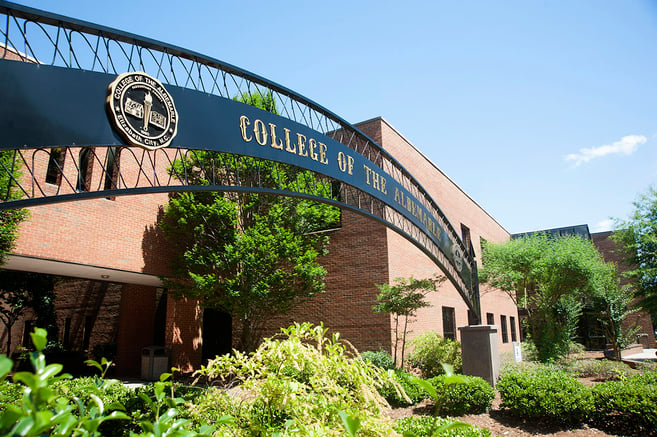
Wynegar: Two things came to mind as we were going through earlier conversations...
Yes, our students do go off to four year schools. If you check the statistics nationally and locally, you'll find that our students tend to do better than the native students at those four-year universities. Part of our mission is preparing students for a four-year school, and we do a really good job of that.
The second thing that came to mind was that training students for the jobs that exist today is okay, but anybody who has done the research knows that half of the jobs that exist today won't exist fifteen years from now.
We can train a guy to be a welder, but we also want to train him to be able to be the manager of the shop, or something else so that he's more than just a skilled laborer. We want him to be able to do something a little better down the road, if he needs to. Because the chances are good that in 15 years, there's going to be a robot doing the welding instead of him.
Carter: I want to thank all of the people in Currituck for their undying support. Not just in terms of helping us with our facilities and our programs, but they have really been some of the leaders in some of the dual credit and the high school students coming to us.
They have been wonderful partners for us in every way, and I need to acknowledge and thank them for that, because we really do appreciate having good partners.
These Stories on Workforce Development
No Comments Yet
Let us know what you think